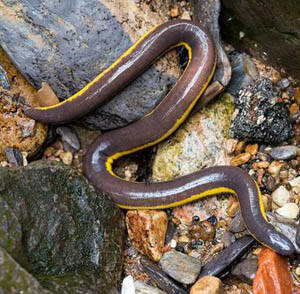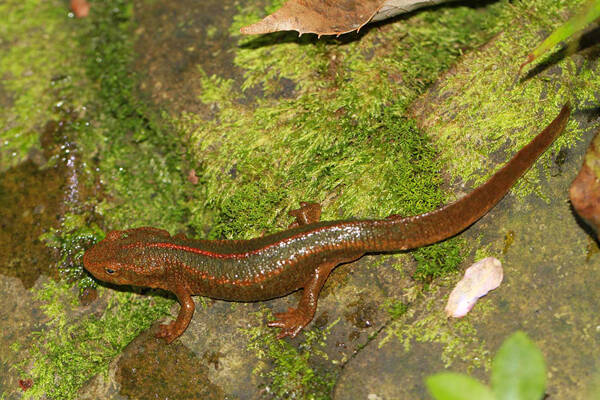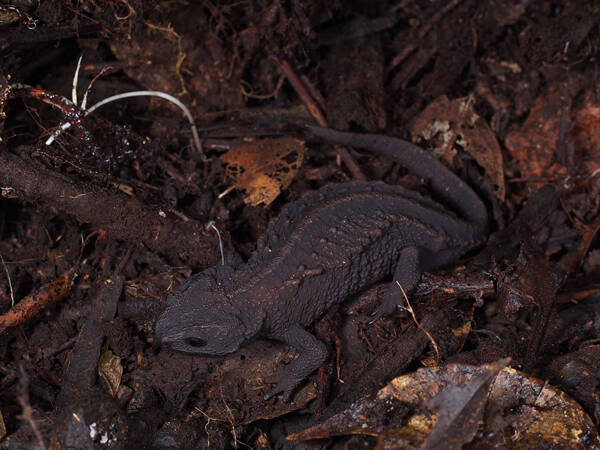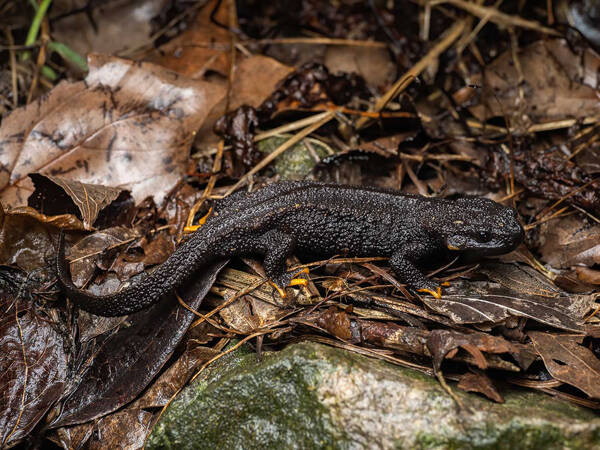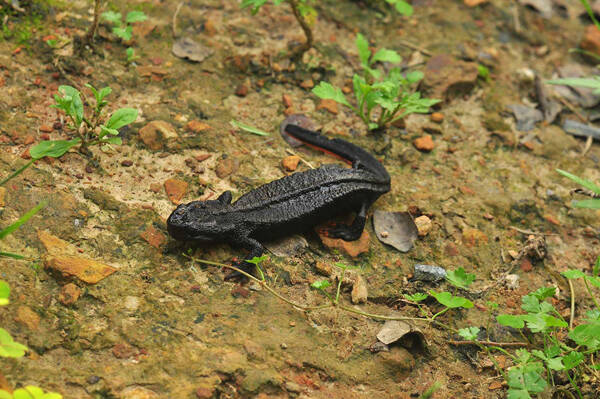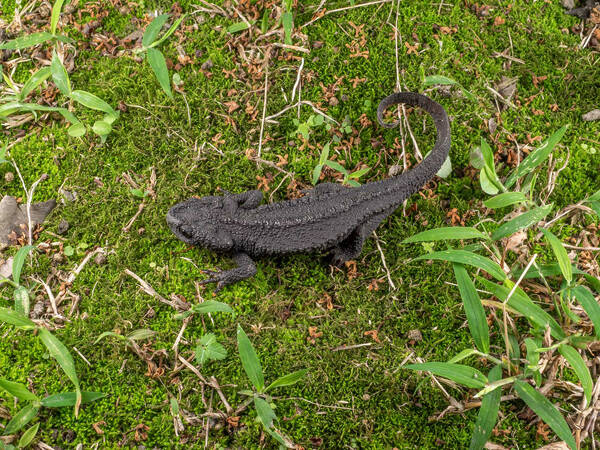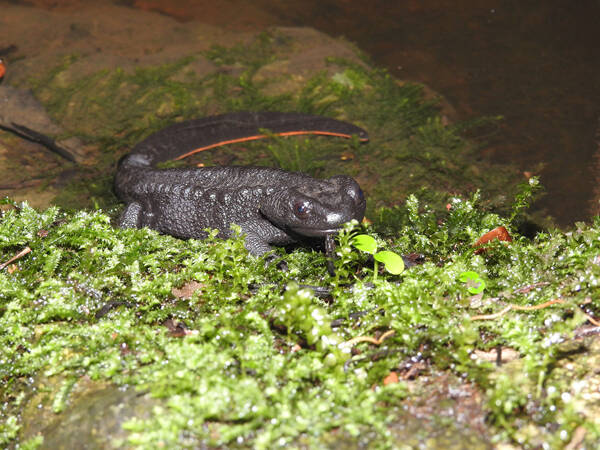Andrias davidianus
IUCN
LCBasic Information
Scientific classification
- name:Andrias davidianus
- Scientific Name:Chinese giant salamander, Chinese baby fish, giant salamander
- Outline:Urodela
- Family:Urodela Cryptobranchidae Andrias
Vital signs
- length:1.1-1.8m
- Weight:Average 20-30 kg, heaviest 50 kg
- lifetime:At least 60 years (in captivity)
Feature
The earliest fossil in the world was unearthed in Inner Mongolia, China, about 165 million years ago, so the Chinese giant salamander can be called a living fossil.
Distribution and Habitat
The Chinese giant salamander is extremely rare in the wild. It is mainly found in the tributaries of the Yangtze River, Yellow River and Pearl River in China with an altitude of more than 1,500 meters. The distribution of giant salamanders is very wide. There are traces of it in the middle and lower reaches of the Yellow River, Yangtze River and Pearl River and their tributaries, covering Beijing Huairou, Hebei, Henan, Shanxi, Shaanxi, Gansu, Qinghai, Sichuan, Guizhou, Hubei, Hunan, Anhui, Jiangsu, Zhejiang, Jiangxi, Fujian, Guangdong and Guangxi provinces and regions.
The Chinese giant salamander lives in clear, low-temperature streams or natural caves, and lives in mud or dark rock crevices. Generally, it lives in mountain streams, rivers and lakes with fast-flowing water, cool water, lush aquatic plants, and many cracks and caves. Sometimes it also moves between the roots of trees on the shore or on fallen tree trunks, and chooses to live in caves at the beach mouth with backflow
Appearance
The Chinese giant salamander is the largest of the existing amphibians, with a general length of about 60-70 cm and a weight of about 5-6 kg. It can grow up to more than 1 meter. It is divided into four parts: head, trunk, limbs and tail. The head is large and flat; the head length is slightly larger than the head width, and the snout is blunt and rounded; the external nostrils are small, slightly oval, and close to the snout; the distance between the noses is greater than 1/2 of the snout length; the eyes are small, dorsal, and without eyelids; the distance between the eyes is wide, about 1.5 times the distance between the eyes and nostrils; the mouth is very large and ventral, with clear lip folds at the back of the mouth, the vomerine teeth and the upper collar teeth are arranged parallel, and the middle of the teeth is slightly concave; the tongue is large, oblate, and the front end is connected to the bottom of the mouth. The trunk is flat, and the distance between the ribs is abo
Details
You may not know much about the Chinese giant salamander, but you must have heard of its alias, the giant salamander. This thing has a long history and is one of the living fossils.
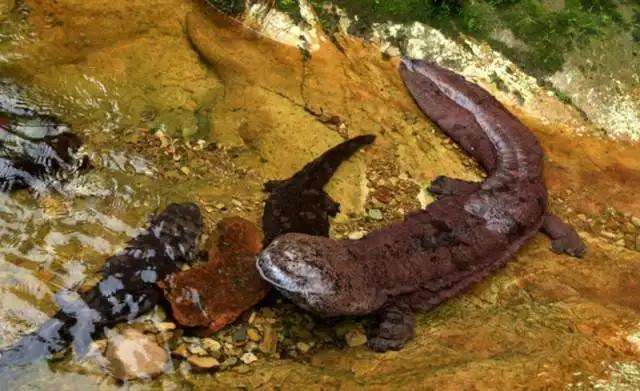
The earliest giant salamander fossil in the world was unearthed in Inner Mongolia, China. The fossil is 165 million years old. At that time, it was the late Jurassic period, when dinosaurs were rampant. Even China's oldest ancient book Shanhaijing has records of it. It looks like a fish with four legs and makes a sound like a baby. This is the description of the appearance of the Chinese giant salamander in Shanhaijing. It is simple and accurate. It looks like a fish but has four legs. The sound it makes is like a baby crying. It is precisely because of this description in Shanhaijing that the Chinese giant salamander has a well-known name for the world, the baby fish. There are actually three types of giant salamanders. The Chinese giant salamander is one of them, and it is also the largest one. It is the largest and most precious amphibian in the world.
There are 21 giant salamander reserves, of which 17 have a certain amount of resources, special institutions and special management personnel. It is worth noting that the resources in the giant salamander reserves have been sharply reduced. Among the original 14 reserves, four giant salamander nature reserves, including the Liangcha Giant Salamander Nature Reserve in Yongshun County, Hunan Province (county-level, established in 1988), the Dachengshan Giant Salamander Nature Reserve in Loudi City (county-level, established in 1987), the Longmen Giant Salamander Nature Reserve in Chenxi County (county-level, established in 1983), and the Giant Salamander Nature Reserve in Qianxi County, Guizhou Province (county-level, established in 1984), are actually in a "three-no" state.
At present, the wild population is mainly facing overfishing, and the destruction of habitats has also reduced their living space.
Although the capture of wild Chinese giant salamanders has been banned, Che Jing, the corresponding author of the paper and a researcher at the Kunming Institute of Zoology, Chinese Academy of Sciences, believes that the existing breeding practices and protection measures also need to be adjusted urgently, and the protection areas should be redesigned to avoid the arbitrary release of farmed giant salamanders into the wild.
Listed in the "Red List of Endangered Species of the World Conservation Union" (IUCN) 2004 ver 3.1-Critically Endangered (CR).
Listed in Appendix I, Appendix II and Appendix III of the Convention on International Trade in Endangered Species of Wild Fauna and Flora (CITES) 2019 Edition.
Listed as a national second-class protected animal.
Protect wild animals and stop eating game.
Maintaining ecological balance is everyone's responsibility!

